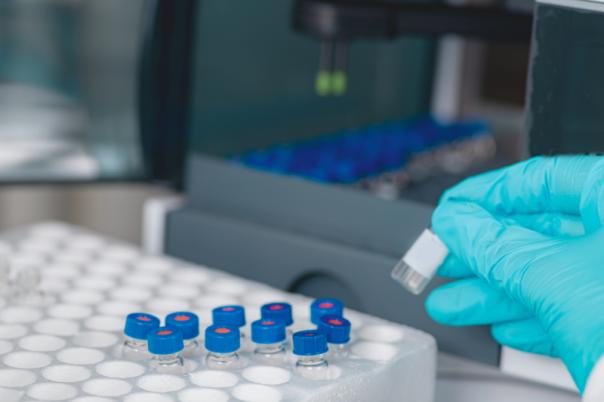Experts from academia, industry, and clinical practice have been exploring the multifaceted issue of sustainability in drug delivery. This article addresses the environmental impact of pharmaceutical excipients and packaging to the complexities of delivering therapies for neurological diseases.
Insights from a recent discussion were shared on regulatory pressures, technological advances, and the need for holistic approaches that balance environmental responsibility, patient access, and cost.
Key Takeaways
· The importance of anticipating regulatory changes and adopting greener excipients and processes.
· The challenges of delivering drugs across biological barriers, particularly in neurological diseases.
· The potential of technological innovations to reduce resource consumption and animal testing.
· The need for holistic sustainability strategies that encompass cost, access, and environmental impact.
· The value of repurposing existing drugs and rationalising packaging to improve efficiency.
Sustainability in Healthcare
The conversation began by highlighting the relevance of sustainability in healthcare, drawing attention to the everyday use of disposable items at conferences as a microcosm of broader environmental concerns.
The discussion dug deeper into the theme of sustainability, arguing that it should be viewed holistically. A “360-degree” approach was advocated — one that considers not only environmental impact but also patient access and cost-effectiveness.
Sustainable therapies must be affordable and accessible to larger populations, not just environmentally friendly. Collaboration between companies, universities, and regulatory agencies is essential to navigate restrictions on substances and streamline approval pathways.
New protein sequencing technologies used in RNA or gene therapy vaccines are enabling researchers to test multiple candidates simultaneously, increasing statistical power and reducing reliance on animal models. The FDA has issued guidance to reduce animal testing, and technologies like barcoding, AI, and organoid platforms are helping pharmaceutical companies work smarter and more sustainably.
Concerns were also raised about excessive packaging, noting that primary, secondary, and tertiary packaging often exceeds what is necessary. Over-engineered packaging not only increases costs but also contributes to environmental degradation. Rationalising packaging design is a straightforward way to improve sustainability.
Evolution of Inhalation Therapies and Environmental Regulation
A historical perspective on inhalation therapies highlights the evolution of pressurised metered dose inhalers (MDIs). Environmental regulations, notably the Montreal Protocol of 1987, led to the phasing out of chlorofluorocarbons (CFCs) due to their ozone-depleting properties. However, the transition to alternative propellants introduced new challenges, as these replacements often have a high global warming potential.
The pharmaceutical industry now faces strategic decisions regarding the adoption of greener excipients and propellants. Companies that anticipate regulatory changes and embrace sustainable alternatives may gain a competitive advantage, both in terms of market positioning and cost management. Sustainability considerations extend beyond excipients to include packaging and supply chain complexities, which can influence formulation choices and overall environmental impact.
Formulation Challenges in Neurological Disease
The conversation then shifted to neurological diseases, discussing the difficulties of delivering drugs to the brain, particularly for conditions like Parkinson’s and Alzheimer’s. Antibody therapies are often ineffective due to the blood-brain barrier, making small molecules a more promising avenue. Furthermore, concerns were raised about the use of metals such as iron and copper in formulations, which could potentially leach into the bloodstream and exacerbate disease pathology.
Work in neurochemistry and drug discovery underscores the complexity of moving drugs from preclinical research to clinical development, particularly when targeting RNA sequences and neurodegenerative disease pathways. Researchers are exploring the best ways to formulate compounds with metals or other conjugates, as well as new delivery methods that can overcome biological barriers.
Delivery Methods and Blood-Brain Barrier
Insights were shared regarding the delivery of drugs across the blood-brain barrier. Nose-to-brain delivery for small molecules shows promise, with advances in nasal sprays and gel-forming powders improving targeting and reducing systemic loss. However, challenges remain for larger molecules, such as antibodies, and there is growing interest in engineering antibodies to target specific brain regions.
Debate continues over whether nose-to-brain delivery has greater potential compared to systemic delivery. Nasal delivery requires high volumes of active pharmaceutical ingredient to achieve the desired effect, which is a significant limitation. Other approaches — such as transferrin receptors, bispecific antibodies, intrathecal delivery, and wearable devices — are being investigated for their ability to facilitate brain penetration, though their sustainability and practicality remain in question.
Economic and Regulatory Considerations
The economic realities of sustainable drug development reveal that, despite efforts to reduce the carbon footprint of platforms and processes, financial incentives from health authorities are unlikely unless there is clear evidence of cost savings, such as reduced hospitalisation. Social responsibility and competitive advantage remain key drivers for the adoption of greener practices.
The pharmaceutical industry is committed to reducing its environmental footprint, though achieving the final stages of reduction is particularly challenging and costly. The business opportunity lies in developing processes and products that support these goals, as companies seek suppliers and partners that help them meet sustainability targets.
Green Chemistry and Repurposing
Green chemistry is emerging as a central theme, encouraging the use of less solvent-intensive processes, cyclic solvents, and supercritical CO₂. While these methods may not yet be economically viable, regulatory and market pressures are likely to drive innovation. AI and in silico modelling can reduce resource consumption, though their own energy demands must be managed.
Repurposing existing FDA-approved compounds offers a promising strategy for sustainability. By screening and redeploying drugs that are already approved or in late-stage clinical development, companies can save time, money, and resources. This approach also leverages existing safety and efficacy data, streamlining the path to market.
Closing Remarks
Key themes have emerged around innovation in drug development and delivery, the interplay between patient impact, business strategy, and environmental sustainability, and the need for a balanced approach that does not sacrifice efficacy or access.
While regulatory and economic pressures are important, the ultimate goal is to deliver therapies that are effective, accessible, and environmentally responsible. Collaboration, technological innovation, and a willingness to rethink traditional practices will be essential to achieving these objectives.







